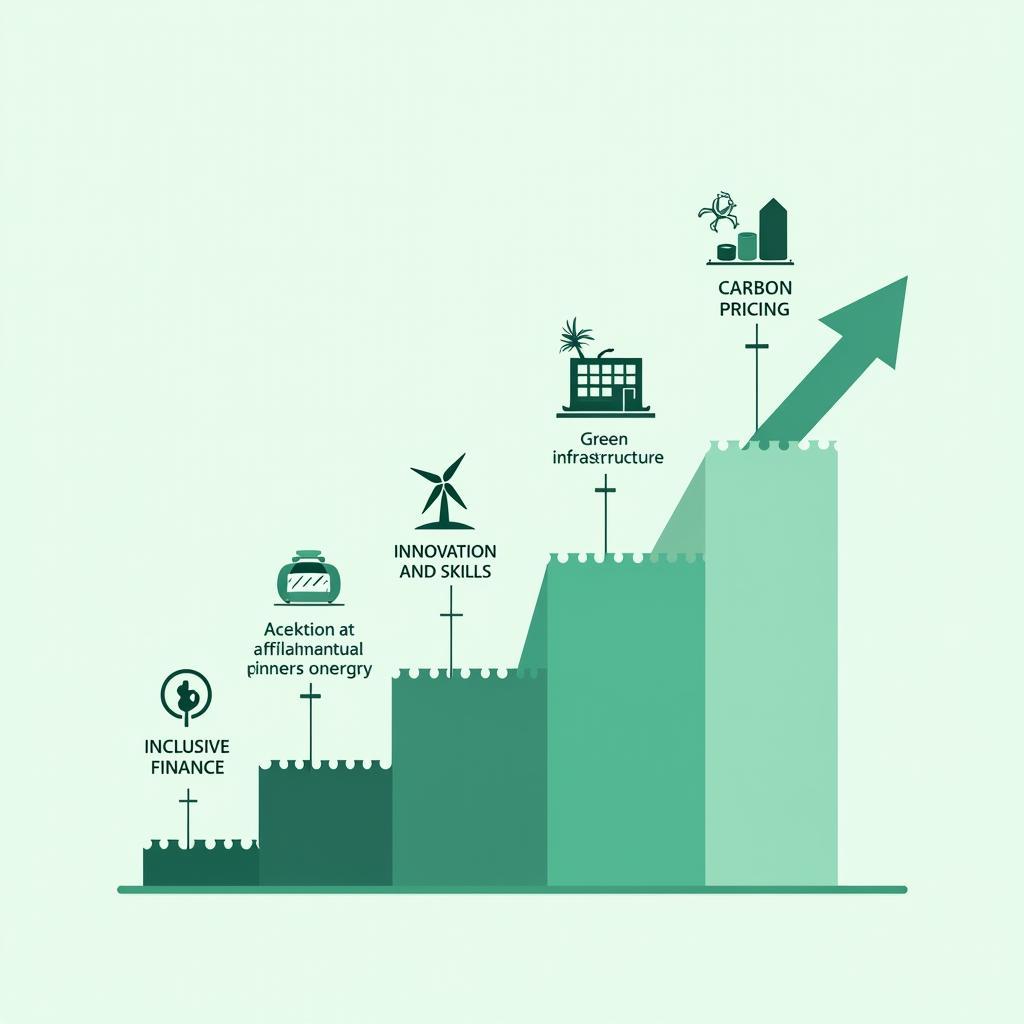Mở bài
Trong vài năm gần đây, chủ đề The Role Of AI In Scientific Research Advancements xuất hiện dày đặc trong đề IELTS Writing Task 2 vì nó chạm tới giao điểm giữa công nghệ, khoa học và đạo đức nghiên cứu. Với tốc độ bùng nổ của AI trong phát hiện thuốc, dự báo khí hậu và tự động hóa thí nghiệm, đây là một chủ đề “ăn điểm” nếu bạn nắm được góc nhìn, từ vựng học thuật và cấu trúc lập luận chuẩn.
Trong bài này, bạn sẽ:
- Luyện 3 bài mẫu (Band 8-9, 6.5-7 và 5-6) kèm phân tích chấm điểm chi tiết theo 4 tiêu chí
- Nắm bộ từ vựng chủ đề, collocations học thuật, và 6 cấu trúc câu dễ ăn điểm
- Có checklist tự đánh giá theo từng giai đoạn làm bài và mẹo quản lý thời gian
- Tham khảo 2-3 đề thi thực tế liên quan đến AI và công nghệ đã được nêu trên các nguồn uy tín
Một số đề thực tế (được tổng hợp từ các nguồn uy tín như IELTS-Blog, IELTS Liz, British Council/IDP – nội dung tương đương, dạng hỏi quen thuộc):
- Artificial intelligence will soon replace many jobs. Do the advantages outweigh the disadvantages? (dạng advantages/disadvantages)
- More and more tasks at home and work are being performed by robots. Is this a positive or negative development? (dạng positive/negative)
- Technology in education: Some people think that technology will replace teachers. Others argue it will only assist them. Discuss both views and give your own opinion. (dạng discuss both views)
Nhằm bám sát ý định tìm kiếm và tăng cơ hội luyện tập theo đúng “The role of AI in scientific research advancements”, bài viết sẽ sử dụng một đề tổng hợp sát ngữ cảnh khoa học và đạo đức nghiên cứu.
 Vai trò của AI trong nghiên cứu khoa học và IELTS Writing Task 2
Vai trò của AI trong nghiên cứu khoa học và IELTS Writing Task 2
1. Đề Writing Part 2
Artificial intelligence is increasingly used across scientific fields, from drug discovery to climate modelling. To what extent do you agree or disagree that AI will become the primary driver of future scientific breakthroughs?
Dịch đề: Trí tuệ nhân tạo ngày càng được sử dụng rộng rãi trong các lĩnh vực khoa học, từ phát hiện thuốc đến mô hình hóa khí hậu. Bạn đồng ý hay không đồng ý đến mức độ nào với ý kiến cho rằng AI sẽ trở thành động lực chính của các đột phá khoa học trong tương lai?
Phân tích đề bài:
- Dạng câu hỏi: Opinion (To what extent do you agree or disagree?). Bạn cần thể hiện lập trường rõ ràng và nhất quán, có thể “agree largely with caveats” hoặc “partially agree”.
- Thuật ngữ quan trọng:
- primary driver: động lực chính
- scientific breakthroughs: đột phá khoa học
- drug discovery, climate modelling: ví dụ điển hình để phát triển luận điểm
- Lỗi thường gặp:
- Lệch chủ đề sang “AI và việc làm” hoặc “AI trong giáo dục” thay vì “AI trong nghiên cứu khoa học”.
- Nêu lợi/hại chung chung, thiếu ví dụ khoa học cụ thể (clinical trials, reproducibility, bias).
- Dùng từ technology/AI lẫn lộn, mơ hồ về phạm vi.
- Cách tiếp cận chiến lược:
- Xác định rõ tiêu chí “primary driver” (vai trò dẫn dắt so với con người, thiết bị thí nghiệm, tài trợ).
- Triển khai 2 thân đoạn: (1) AI tăng tốc khám phá và mở rộng năng lực phân tích; (2) Giới hạn: bias, tái lập kết quả, causation vs correlation, đạo đức dữ liệu.
- Kết luận rõ ràng: đồng ý ở mức độ nào và điều kiện kèm theo (human oversight, ethical governance).
2. Bài mẫu Band 8-9
Giới thiệu: Bài Band 8-9 cần lập luận sắc bén, ví dụ chính xác, liên kết mượt, từ vựng học thuật tự nhiên, và quan điểm nhất quán.
Bài luận (khoảng 300 từ):
In recent years, artificial intelligence (AI) has moved from a promising tool to a pervasive engine in laboratories, accelerating tasks from protein folding to climate simulations. I largely agree that AI will be a primary driver of future breakthroughs, yet only under conditions of rigorous human oversight and ethical governance.
To begin with, AI demonstrably accelerates hypothesis generation and validation. By mining vast, heterogeneous datasets—genomic sequences, satellite images, and historical lab records—algorithms can detect patterns that human teams might overlook for years. In drug discovery, for instance, machine learning narrows candidate molecules and predicts toxicity profiles, thereby compressing timelines from years to months. Similarly, in climate science, AI-enhanced models integrate multi-source data to refine extreme-weather forecasts, helping scientists prioritise field measurements and design smarter experiments. In short, AI scales both the breadth and depth of inquiry, moving research from artisanal craftsmanship to high-throughput discovery.
Nevertheless, equating speed with truth would be naïve. AI is inherently correlational; it can fit complex data yet still miss causal mechanisms. Without careful experimental design, we risk overfitting, spurious inferences, and irreproducible results. Moreover, algorithmic bias—arising from skewed training data—can distort biomedical findings or underrepresent vulnerable communities in environmental impact models. Equally crucial is explainability: researchers and regulators must understand why a model recommends a pathway or policy before translating it into clinical trials or public action.
Ultimately, AI will drive many scientific advances precisely because it augments, rather than replaces, human judgment. The most consequential discoveries will emerge where AI’s pattern-finding power meets scientists’ theory-building, peer review, and ethical scrutiny. Therefore, I agree that AI is poised to be a primary driver, provided we institutionalise transparent data curation, robust validation pipelines, and accountable governance. Breakthroughs are not born from algorithms alone, but from the partnership that keeps them honest, causal, and humane.
Phân tích Band điểm
| Tiêu chí | Band | Nhận xét |
|---|---|---|
| Task Response (Hoàn thành yêu cầu) | 8.5 | Trả lời trực diện “primary driver”, lập trường “largely agree with conditions” nhất quán; phát triển đủ hai mặt: sức mạnh và giới hạn của AI; kết luận rõ điều kiện đi kèm. |
| Coherence & Cohesion (Mạch lạc & Liên kết) | 8.5 | Topic sentences mạnh, sử dụng chuyển ý logic (To begin with, Nevertheless, Ultimately). Ý được sắp xếp theo tiến trình “năng lực → rủi ro → điều kiện”, mạch liên kết mượt, không lặp từ thừa. |
| Lexical Resource (Từ vựng) | 8.5 | Từ vựng học thuật tự nhiên: hypothesis generation, high-throughput, algorithmic bias, explainability, governance. Collocations chính xác và phù hợp chủ đề. Hầu như không có lỗi từ vựng. |
| Grammatical Range & Accuracy (Ngữ pháp) | 8.0 | Câu phức đa dạng, mệnh đề nhượng bộ, rút gọn phân từ, mệnh đề quan hệ. Dấu câu kiểm soát tốt; không lỗi ngữ pháp đáng kể. |
Các yếu tố giúp bài này được chấm điểm cao
- Trả lời đúng trọng tâm “primary driver” thay vì nói chung về AI.
- Ví dụ cụ thể theo ngữ cảnh khoa học: drug discovery, climate models, reproducibility.
- Dùng khung “agree with caveats” thể hiện tư duy phản biện trưởng thành.
- Collocations tự nhiên: compress timelines, robust validation pipelines, data curation.
- Liên kết ý theo chuỗi nhân quả, không dàn trải.
- Đưa yếu tố đạo đức và governance để tăng chiều sâu học thuật.
- Kết bài neo lại lập trường, nêu điều kiện vận hành rõ ràng.
 Bài mẫu IELTS Task 2 về vai trò của AI trong nghiên cứu khoa học
Bài mẫu IELTS Task 2 về vai trò của AI trong nghiên cứu khoa học
3. Bài mẫu Band 6.5-7
Giới thiệu: Band 6.5-7 có ý rõ ràng, ví dụ hợp lý, nhưng từ vựng và cấu trúc chưa thật tinh tế; đôi chỗ lập luận còn an toàn.
Bài luận (260-270 từ):
Artificial intelligence is now present in many research labs, and it clearly helps scientists handle large datasets and repetitive tasks. In my view, AI will be one of the main forces behind future discoveries, but it will not work well without human guidance.
Firstly, AI tools can analyse data faster than humans and can suggest patterns that researchers may miss. For example, in medical studies, AI can screen many molecules and point to the most promising ones for further tests. This saves time and money and lets scientists focus on more creative parts of research, such as designing experiments or forming new theories. In environmental science, AI can combine data from sensors and satellites to improve predictions about storms and floods. These benefits show that AI can speed up the research process.
However, there are also important limitations. AI systems might learn from incomplete or biased data, which leads to wrong conclusions. Besides, sometimes models are like a “black box” and researchers do not understand why the system makes a certain decision. If scientists follow such results blindly, the research may not be reliable or reproducible. Therefore, ethical rules and careful checking are necessary.
In conclusion, I believe AI will play a major role in scientific progress, especially when dealing with complex data and time-consuming tasks. Still, experts must supervise AI, verify its outputs, and judge whether results make sense in real-world experiments. With this balance, AI can push science forward while humans keep it responsible.
Phân tích Band điểm
| Tiêu chí | Band | Nhận xét |
|---|---|---|
| Task Response (Hoàn thành yêu cầu) | 7.0 | Trả lời đúng câu hỏi, đưa quan điểm rõ ràng. Phát triển hai mặt lợi/giới hạn nhưng ví dụ còn cơ bản, chưa nhiều chiều. |
| Coherence & Cohesion (Mạch lạc & Liên kết) | 7.0 | Bố cục chuẩn 4 đoạn, liên kết rõ ràng. Tuy nhiên, chuyển ý chưa thật đa dạng, còn lặp cấu trúc câu chủ đề. |
| Lexical Resource (Từ vựng) | 6.5 | Từ vựng phù hợp nhưng an toàn: saves time and money, important limitations. Thiếu các collocations học thuật nâng cao. |
| Grammatical Range & Accuracy (Ngữ pháp) | 7.0 | Câu phức có nhưng chưa đa dạng; ít lỗi ngữ pháp. Có thể nâng cấp bằng mệnh đề nhượng bộ, đảo ngữ, cụm phân từ. |
So sánh với bài Band 8-9
- Band 8-9 dùng ví dụ chuyên sâu (reproducibility, explainability, governance) trong khi Band 6.5-7 chỉ dừng ở lợi ích chung (save time/money).
- Từ vựng Band 8-9 giàu collocations học thuật; Band 6.5-7 an toàn hơn.
- Cấu trúc câu ở Band 8-9 đa dạng (nhượng bộ, rút gọn, mệnh đề quan hệ) giúp giọng điệu thuyết phục và tự nhiên hơn.
4. Bài mẫu Band 5-6
Giới thiệu: Band 5-6 thường có ý nhưng phát triển còn lỏng, ví dụ chung chung, lỗi mạo từ/giới từ/thì, từ vựng lặp và collocation sai.
Bài luận (250-260 từ) với lỗi sai được làm nổi bật:
Nowadays AI is very popular in science, and many people think it will lead to many breakthroughs. AI will replace scientists in near future, because computers can do everything faster.
Firstly, AI can process big data very quick and find patterns. It reduce mistakes and make research more efficient. For example, in medicine, AI look at many information and shows the best result. This is good for society because more discoveries means people are healthier. Also, AI do not get tired, so it can work 24 hours.
However, there is problems. Some AI have bias data and this can cause wrong decisions. Also many models are black box and not explain. Scientists sometimes trust AI too much, and then the research are not correct. In the another hand, humans can think creative and understand context, which AI cannot always do.
In conclusion, while AI is useful tool for science, it should not be the main driver because it have many limits and it can makes mistakes. People must control AI carefully and use it only as assistant.
Phân tích Band điểm
| Tiêu chí | Band | Nhận xét |
|---|---|---|
| Task Response (Hoàn thành yêu cầu) | 5.5 | Có quan điểm nhưng phát triển ý nông, ví dụ chung chung; có mâu thuẫn giữa mở bài (replace scientists) và kết luận (not main driver). |
| Coherence & Cohesion (Mạch lạc & Liên kết) | 5.5 | Bố cục cơ bản nhưng câu nối nghèo nàn; lặp cấu trúc; ý chưa được chứng minh thuyết phục. |
| Lexical Resource (Từ vựng) | 5.5 | Từ vựng đơn giản; collocation sai (bias data), lặp từ; thiếu thuật ngữ học thuật. |
| Grammatical Range & Accuracy (Ngữ pháp) | 5.0 | Lỗi mạo từ, chia động từ, số ít/số nhiều, giới từ; cấu trúc câu đơn giản, thiếu đa dạng. |
Những lỗi sai của bài – phân tích & giải thích
| Lỗi sai | Loại lỗi | Sửa lại | Giải thích |
|---|---|---|---|
| AI will replace scientists in near future | Mạo từ/giới từ | in the near future | Cụm cố định: in the near future cần mạo từ “the”. |
| It reduce / make research | Chia động từ | It reduces / makes | Chủ ngữ số ít “It” → động từ thêm “-s”. |
| AI look at many information | Danh từ không đếm được | AI looks at much information / a lot of information | “Information” không đếm được; động từ cũng phải “looks”. |
| more discoveries means | Hòa hợp chủ-vị | more discoveries mean | “Discoveries” số nhiều → “mean”. |
| there is problems | Số ít/số nhiều | there are problems | “Problems” số nhiều → “are”. |
| Some AI have bias data | Collocation/adj-n | have biased data / contain bias | “Biased data” là tính từ; hoặc “contain bias”. |
| black box and not explain | Rút gọn sai | are a black box and not explained | Dùng bị động: not explained; hoặc “are opaque”. |
| In the another hand | Từ nối/cụm cố định | On the other hand | Cụm cố định: On the other hand. |
| it have / it can makes | Chia động từ | it has / it can make | “It” số ít → “has”, modal + V nguyên mẫu. |
Cách Cải Thiện Từ Band 6 Lên Band 7
- Sửa triệt để lỗi cơ bản: mạo từ (a/an/the), hòa hợp chủ-vị, danh từ không đếm được (information, research), giới từ cố định.
- Thêm ví dụ cụ thể theo ngữ cảnh khoa học (drug candidates, reproducibility tests, data curation) thay vì nói chung.
- Nâng cấp từ nối: Instead of, Nevertheless, By the same token, Consequently.
- Dùng collocations học thuật: mitigate bias, validate findings, high-throughput screening.
- Đa dạng cấu trúc: mệnh đề nhượng bộ (Although/While), cụm phân từ (Leveraging X, researchers…), câu điều kiện loại 1/2 kèm nhấn mạnh.
5. Từ vựng quan trọng cần nhớ
| Từ/Cụm | Loại từ | Phiên âm | Nghĩa | Ví dụ | Collocations |
|---|---|---|---|---|---|
| breakthrough | n | /ˈbreɪkˌθruː/ | đột phá | The AI-led approach delivered a major breakthrough in diagnostics. | scientific/major breakthrough |
| hypothesis-driven | adj | /haɪˈpɒθəsɪs ˈdrɪvən/ | dựa trên giả thuyết | Hypothesis-driven studies remain essential for causality. | hypothesis-driven research |
| data-driven | adj | /ˈdeɪtə ˈdrɪvən/ | dựa trên dữ liệu | A data-driven model can prioritise experiments. | data-driven decisions |
| algorithmic bias | n | /ˌælɡəˈrɪðmɪk ˈbaɪəs/ | thiên lệch thuật toán | Algorithmic bias undermines fairness. | mitigate/measure algorithmic bias |
| reproducibility | n | /rɪˌprɒdjʊsəˈbɪləti/ | khả năng tái lập | Reproducibility is a core scientific value. | reproducibility crisis/standards |
| explainability | n | /ɪkˌspleɪnəˈbɪləti/ | khả năng giải thích | Explainability builds trust in AI models. | improve/require explainability |
| validation pipeline | n | /ˌvælɪˈdeɪʃn ˈpaɪplaɪn/ | quy trình thẩm định | A robust validation pipeline reduces errors. | build/design a validation pipeline |
| data curation | n | /ˈdeɪtə kjʊəˈreɪʃn/ | chuẩn hóa/biên tập dữ liệu | Careful data curation prevents noise. | perform data curation |
| high-throughput | adj | /ˌhaɪ ˈθruːpʊt/ | thông lượng cao | High-throughput screening speeds discovery. | high-throughput screening |
| to expedite | v | /ˈekspədaɪt/ | thúc đẩy/đẩy nhanh | AI can expedite early-stage trials. | expedite approval/process |
| triangulate | v | /traɪˈæŋɡjʊleɪt/ | kiểm chứng chéo | Researchers triangulate findings across datasets. | triangulate evidence/data |
| ethical oversight | n | /ˈeθɪkl ˈəʊvəsaɪt/ | giám sát đạo đức | Ethical oversight is indispensable. | ensure/strengthen ethical oversight |
| causation vs correlation | n | /kɔːˈzeɪʃn vɜːs ˌkɒrəˈleɪʃn/ | nhân quả vs tương quan | AI often captures correlation, not causation. | establish/assess causation |
| Granted, … | linker | /ˈɡrɑːntɪd/ | thừa nhận rằng | Granted, models are not perfect. | Granted, X is true, but… |
| Notwithstanding | linker | /ˌnɒtwɪðˈstændɪŋ/ | mặc dù, dẫu vậy | Notwithstanding its limits, AI adds value. | Notwithstanding + noun/that |
Lưu ý phát âm: luyện IPA chậm-rõ, ghi âm tự nghe lại; dùng shadowing để ghi nhớ collocations.
6. Cấu trúc câu dễ ăn điểm cao
- Câu phức với mệnh đề phụ thuộc
- Công thức: Mệnh đề chính + liên từ phụ thuộc (although/while/because/if) + mệnh đề phụ.
- Ví dụ (từ bài Band 8-9): Nevertheless, equating speed with truth would be naïve, because AI is inherently correlational.
- Tại sao ghi điểm: Thể hiện quan hệ logic rõ và kiểm soát ngữ pháp tốt.
- Ví dụ bổ sung: Although AI accelerates analysis, it cannot replace theory-building. If datasets are biased, conclusions will be skewed.
- Lỗi thường gặp: Thiếu dấu phẩy hợp lý; dùng although/ but cùng lúc.
- Mệnh đề quan hệ không xác định (non-defining relative clause)
- Công thức: Danh từ + , which/who + mệnh đề bổ sung,
- Ví dụ: algorithms can detect patterns, which human teams might overlook for years.
- Điểm mạnh: Bổ sung thông tin tinh tế, giàu học thuật.
- Ví dụ: The model offers transparency, which regulators demand. The dataset was curated, which reduced noise.
- Lỗi thường gặp: Quên dấu phẩy trước which; nhầm that/which.
- Cụm phân từ (participle phrases)
- Công thức: V-ing/V-ed + cụm bổ nghĩa, đứng đầu/giữa/cuối câu.
- Ví dụ: Moving research from artisanal craftsmanship to high-throughput discovery, AI scales both breadth and depth.
- Điểm mạnh: Nén thông tin, tăng “nhịp” học thuật.
- Ví dụ: Leveraging multi-source data, scientists prioritise trials. Trained on biased inputs, the model underperformed.
- Lỗi: Sai chủ ngữ logic (dangling participle).
- Câu chẻ (Cleft sentences)
- Công thức: It is/was + thành phần nhấn mạnh + that/who + mệnh đề.
- Ví dụ: It is explainability that researchers and regulators must understand.
- Điểm mạnh: Nhấn trọng tâm, tăng thuyết phục.
- Ví dụ: It is human oversight that keeps AI accountable. It was data curation that prevented errors.
- Lỗi: Lạm dụng làm câu rối.
- Câu điều kiện nâng cao
- Công thức: If + S + were to V / should + V, S + would + V.
- Ví dụ: If AI were to replace human judgment, breakthroughs would become fragile.
- Điểm mạnh: Nêu giả định học thuật, chuyên nghiệp.
- Ví dụ: Should datasets be incomplete, results would be unreliable. If oversight were absent, harm could ensue.
- Lỗi: Sai thì; dùng would ở mệnh đề điều kiện.
- Đảo ngữ
- Công thức: Not only + trợ động từ + S + V, but also…
- Ví dụ: Not only does AI expand analytical capacity, but it also expedites experimental design.
- Điểm mạnh: Nhấn mạnh, tăng điểm Coherence & Cohesion.
- Ví dụ: Seldom do models generalise perfectly. Only by validating results can we trust them.
- Lỗi: Quên đảo trợ động từ; thì sai.
7. Checklist Tự Đánh Giá
- Trước khi viết:
- Xác định rõ yêu cầu: agree/disagree đến mức nào? “Primary driver” nghĩa là gì?
- Chọn 2 luận điểm mạnh + 1 phản biện then chốt.
- Note nhanh ví dụ khoa học cụ thể (drug candidates, climate models, bias).
- Trong khi viết:
- Viết mở bài 2-3 câu: bối cảnh → lập trường rõ.
- Mỗi thân đoạn: 1 topic sentence + phát triển + ví dụ + mini-conclusion.
- Dùng từ nối học thuật hợp lý; tránh lặp từ.
- Sau khi viết:
- Soát lỗi mạo từ, số ít/số nhiều, thì động từ, danh từ không đếm được (research, information).
- Kiểm tra liên kết: mỗi câu có đẩy ý tiến lên không?
- Cắt bớt từ/ý thừa, đảm bảo 270-320 từ (Band 8-9) hoặc 250-280 (Band 6.5-7).
- Mẹo quản lý thời gian:
- 5 phút lập dàn ý; 25-28 phút viết; 2-4 phút soát lỗi.
- Ưu tiên rõ lập trường và ví dụ; không sa đà số liệu khó kiểm chứng.
- Nếu bí từ vựng, dùng paraphrase an toàn + collocations quen tay.
Kết bài
Chủ đề The role of AI in scientific research advancements đòi hỏi bạn thể hiện quan điểm chín chắn: AI có thể trở thành động lực chính, nhưng chỉ khi đi cùng giám sát đạo đức, dữ liệu chuẩn hóa và thẩm định nghiêm ngặt. Trong bài viết, bạn đã có 3 bài mẫu theo ba mức band, phân tích chấm điểm cụ thể, danh mục từ vựng, 6 cấu trúc ghi điểm cao và checklist thao tác thực chiến. Con đường cải thiện khả thi: mỗi tuần viết 2 bài theo dàn ý ở trên, trao đổi với bạn học/giáo viên để nhận phản hồi, tập trung sửa 3 nhóm lỗi “kinh niên” (mạo từ, thì, collocations). Thời gian cải thiện thực tế: 4-8 tuần với kỷ luật tốt.
Hãy luyện ngay một đề tương tự và đăng bài trong nhóm học hoặc phần bình luận để nhận góp ý. Tham khảo thêm các bài về cấu trúc lập luận [internal_link: task-2-cach-lap-luan], collocations học thuật [internal_link: collocations-ielts], và quản lý thời gian [internal_link: time-management-writing]. Với phương pháp đúng, bạn sẽ tự tin chinh phục IELTS Writing Task 2 trên các chủ đề công nghệ và khoa học.


